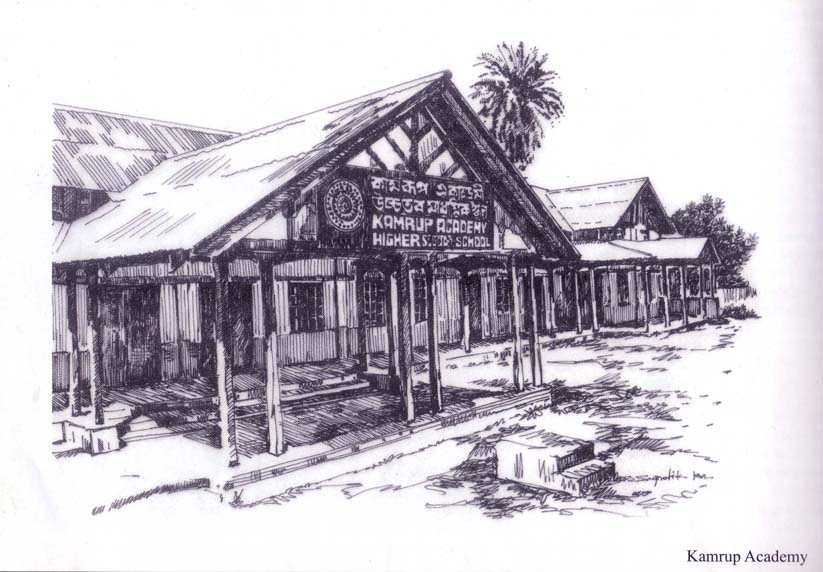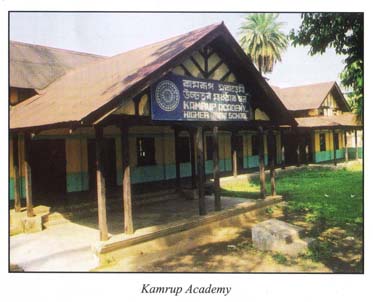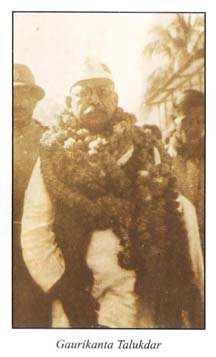|
OWN SCHOOL OF THOUGHT |
 |
Those were the burning days of the national movement and there were hardly any buyers of foreign stuff. The enlightened section of townspeople began favoring Kurkutch salt to Liverpool salt, Benaras sugar to foreign sugar and desi cloth to Manchester-made loincloth. The head priest of the Kamakhya temple also appealed to the pandas (priest), grocers and sweetmeat sellers not to accept foreign goods or indulge in their sale and purchase in the Nilachal hills. Around the same time, in some quarters, a demand was raised for boycotting Cotton College and Cotton Collegiate School and establishing a national school.
|
In this backdrop, the Cunningham Circular of 1930 only added fuel to fire. J R Cunningham, the then powerful Director of Public Instructions of Assam issued a circular imposing a blanket ban on any anti-British and pro-swadeshi activity by students. He also ordered them to sign an undertaking that they would quit their schools and colleges if they participated in anti-government demonstrations or movement. Refusing to oblige to the diktat, thousands of students throughout Assam left their institutions. There were about 400 such students in Guwahati alone. To help this group of students some philanthropists decided to start a swadeshi school in town, on the lines of national schools that had already been established in Calcutta, Sylhet, Habiganj, Karimganj, Silchar and other places. The Kamrup Academy was conceived, and Rai Bahadur Kalicharan Sen became its founder-president and Gaurikanta Talukdar its secretary. Unfortunately, however, the Academy did not get off to a smooth start. No landlord in Guwahati was willing to rent out rooms or buildings to the school since they thought it would invite the ire of the Raj. Rai Bahadur Kalicharan Sen, an advocate by profession, finally persuaded his businessman client Ramswarup Singh to rent out his two-storey building in Tokobari for a monthly rent of Rs 30. Singh agreed on condition that if the police or government raided the premises Sen would fight the case. |
|
On July 15, 1930 the school began functioning with 53 students, with lessons being imparted in both Bengali and Assamese. Since the school failed to go get affiliated to a recognized board within the year, the first batch of the students, backed by Sir Ashutosh Mukherjee, appeared at the Matriculation examination as private candidates. Akshay Kumar Dutta, Dwijesh Sengupta, Satish Chandra Kakati and Bharat Das were among the six students who passed the Matriculation examination from the Academy that year.
In 1937 at the initiative of Gopinath Bordoloi and Gaurikanta Talukdar, the school was shifted to its present premise in Chenikuthi. An amount of Rs 17,000 was collected by way of public donation and was used to construct the present U-shaped building. Devendranath Sharma, Keshav Narayan Dutta, Ishwar Prasad Chowdhury, Sureshwar Gohain and Golap Chowdhury headed the school in its nascent stage and nurtured it in all possible ways.
When Shyama Prasad Mukherjee, the then Education Minister of India, visited the school, he was so impressed that he remarked in his public address, “What India needs is man-making education as prescribed by Swami Vivekananda. Nationalist institutions like Kamrup Academy should serve as the model for the country.”
Soon after its establishment the Academy grew to be a hub of nationalist activities. In tune with the swadeshi spirit a handicraft section headed by Gyananda Choudhury and Girish Mali was sent to Sodepur in Bengal for advanced training in paper-making. Four digestor machines and one calendar-making machine were installed in the school premises. Once, Sarat Chandra Sinha, headmaster of Chapar High School, and later Chief Minister of Assam, spent an entire summer vacation at the Kamrup Academy - just to learn the art of paper-making for application at his school.
 |
On Saturdays, students of Kamrup Academy regularly visited the jails to meet political prisoners. In school physical education was emphasized. Many of its students became disciplines of Khudu Mahanta, the legendary sword and stick trainer who taught shills of self-defence. A group of selected students were also trained to prepared nitric acid and hydrochloric acid. Interestingly, several education institutions of the state, including the B Barooah College and J B Law College and J B Law College functioned from the Academy’s premises before they shifted to their own buildings. As the first swadeshi school of the entire northeast, the Kamrup Academy stands head above other educational institutes as a symbol of great heritage, sacrifice and commitment. |
